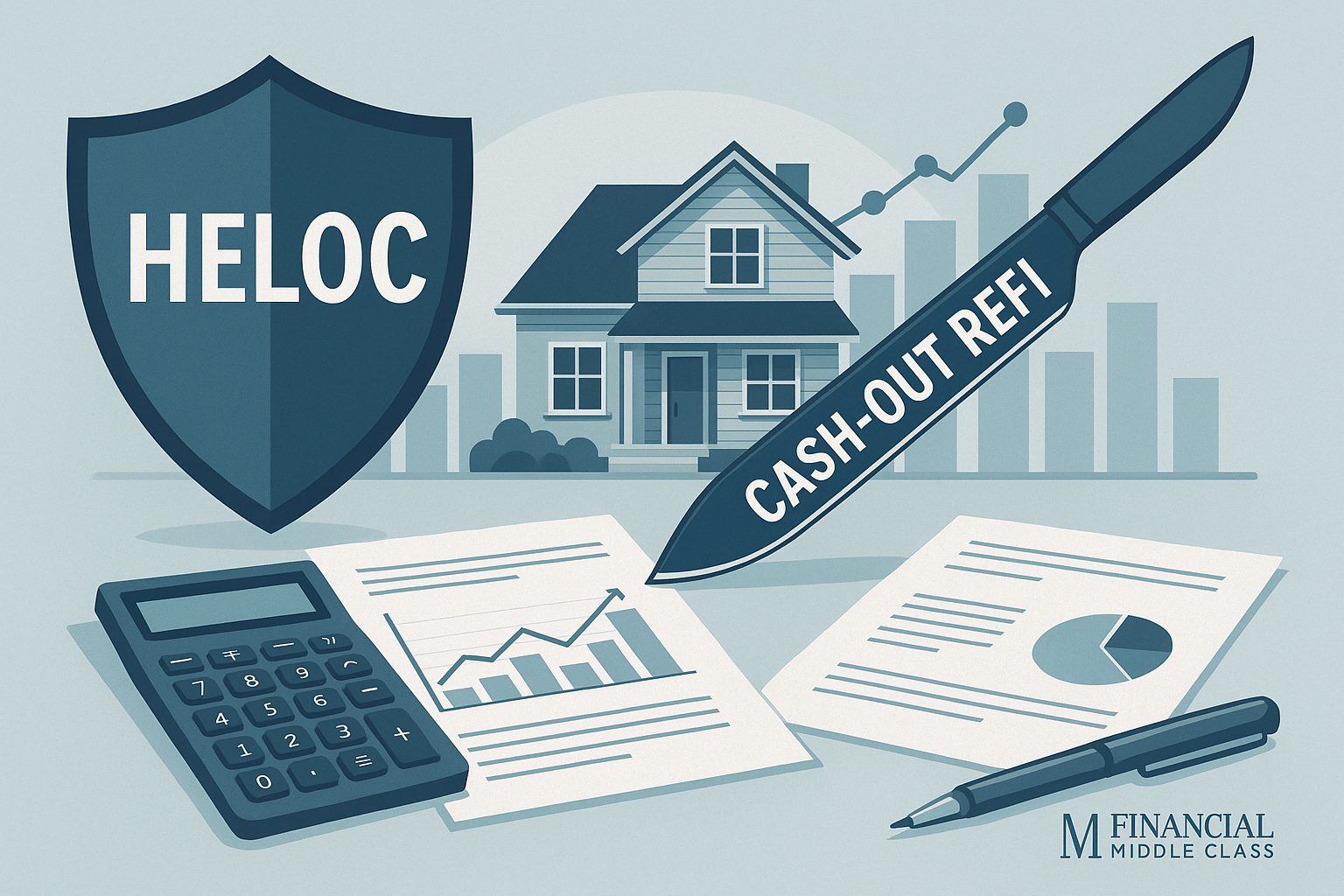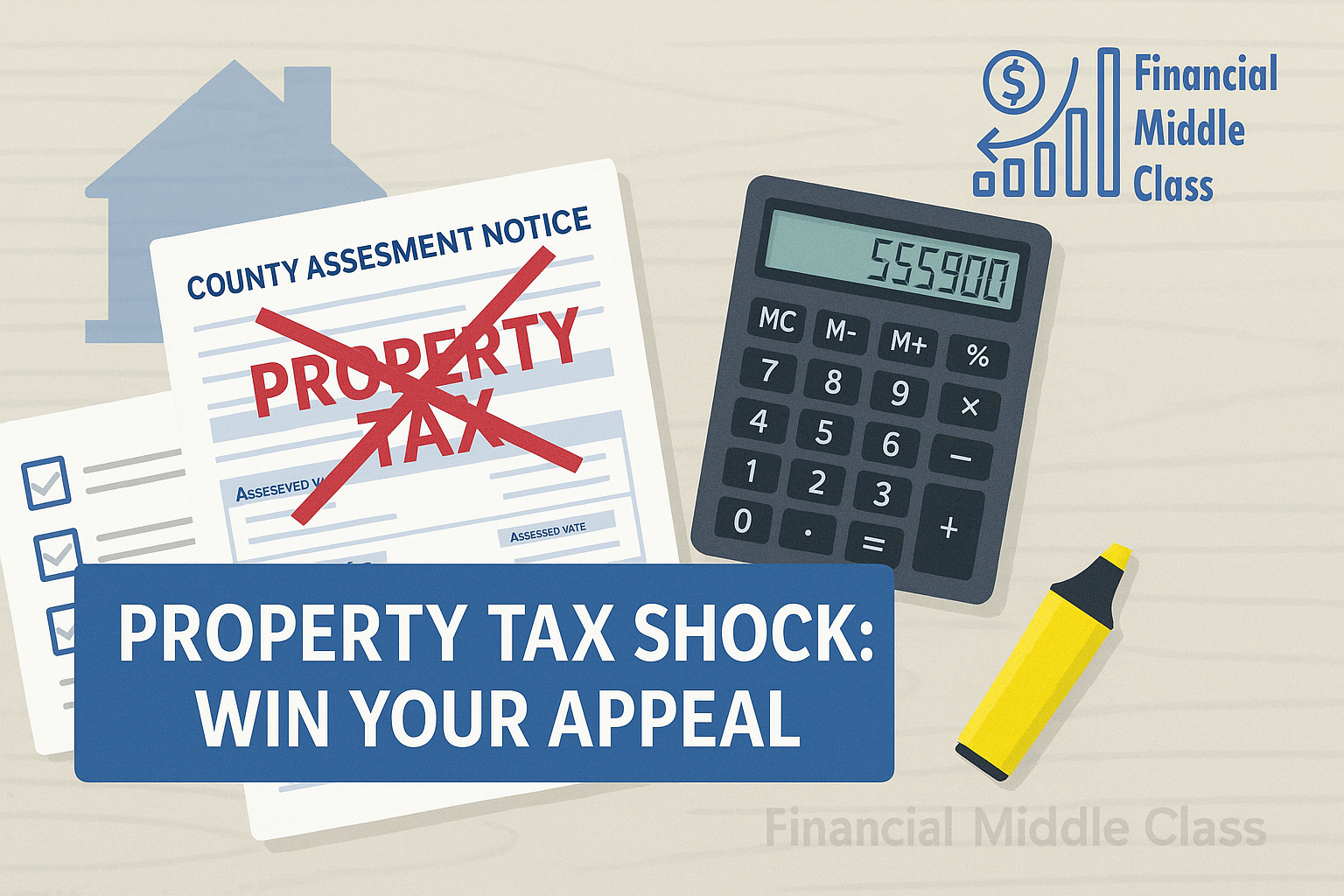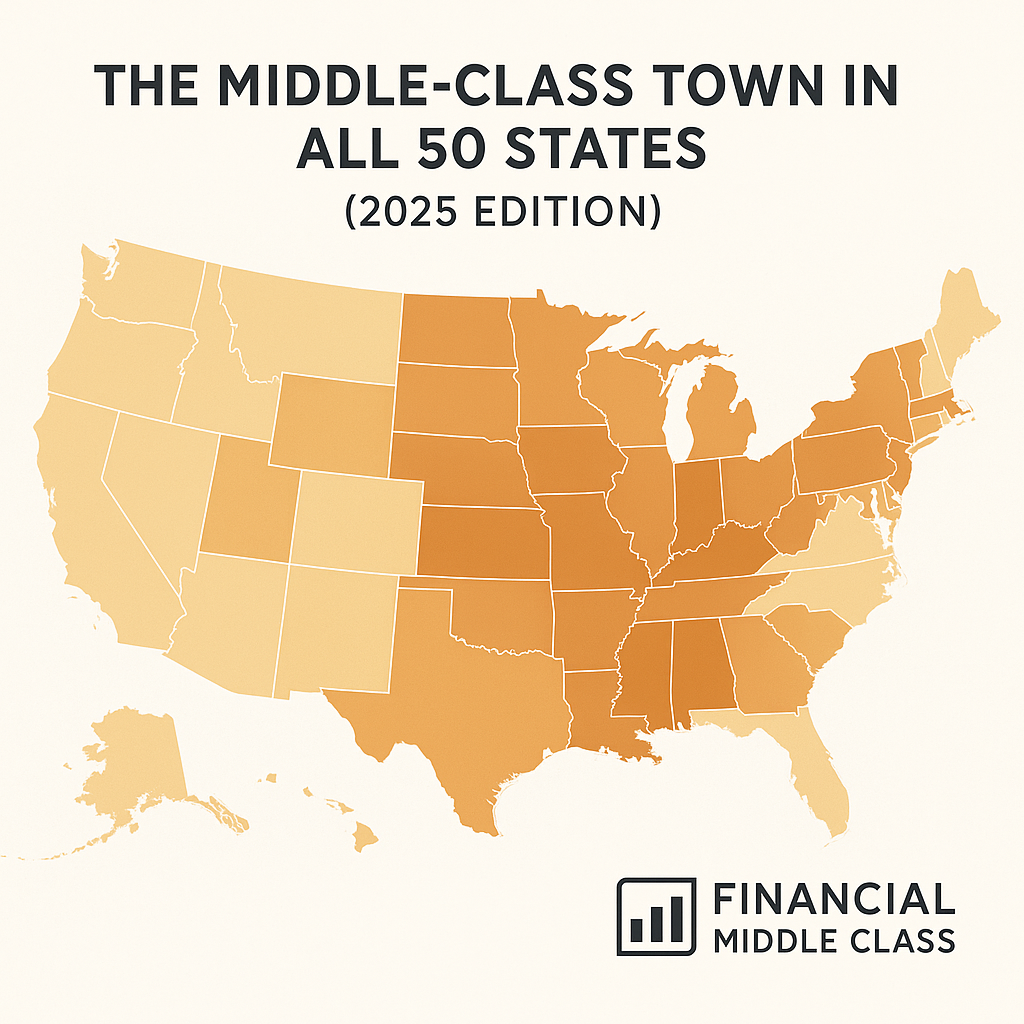
HELOC vs. Cash-Out Refi: Which One Actually Lowers Your Risk?
By Article Posted by Staff Contributor
The estimated reading time for this post is 424 seconds
The Fast Answer (Start Here)
If your current first-mortgage rate is meaningfully lower than today’s, keep it. A HELOC (or fixed second) lets you access equity without touching that “golden” first lien. If you’re facing an ARM reset, want rate certainty for the long haul, or need a single fixed payment, a cash-out refi can de-risk your household—even if the monthly payment nudges up.
Avoid a HELOC if a 2–3 point rate swing would break your budget.
Avoid a cash-out refi if it resets a low-rate mortgage into a higher-rate 30-year clock just to chase a lower monthly payment.
What You’re Really Choosing Between
HELOC (Home Equity Line of Credit)
- What it is: A revolving second mortgage with a credit limit you can draw from. Usually interest-only during the draw period, then it amortizes.
- Why people like it: Flexibility, pay interest only on what you draw, preserve your low-rate first mortgage.
- Hidden risk: Variable rate (index + margin) → payment can rise.
Cash-Out Refinance (New First Mortgage)
- What it is: Replace the existing first mortgage with a larger fixed-rate loan; cash comes at closing.
- Why people like it: One payment, rate certainty, easy to understand.
- Hidden risk: You reset the amortization clock and pay closing costs on the entire balance, not just the cash you needed.
One-Minute Risk Triage (Use This First)
- Is your current first-lien rate materially lower than today’s?
- Yes: Favor a HELOC or fixed second to keep that low rate.
- No / ARM reset ahead: Cash-out refi may win on risk reduction.
- Is your need lumpy or ongoing?
- One-time lump sum (roof, debt payoff): Cash-out or fixed second.
- Phased expenses (multi-stage reno, tuition): HELOC.
- Rate-swing tolerance?
- Low tolerance: Favor fixed (cash-out or fixed second).
- High tolerance + fast payoff plan: HELOC can shine.
- Will this choice shorten your payoff date—not stretch it to 2055?
- If no, stop. Redesign the plan.
- If no, stop. Redesign the plan.
Side-by-Side: Same Dollars, Different Instruments — Scenarios
Same goals, different tools. Use this to see which instrument usually wins and why.
| Scenario | You Need | Current First-Lien | Best Fit (Usually) | Why |
|---|---|---|---|---|
| Pay off $25k at 22% APR | Lump sum | 3.125% fixed (15 yrs left) | Fixed second (or small HELOC + rapid amortization) | Preserves low-rate first; converts high APR to fixed, short-term payoff without restarting a 30-year clock. |
| Phase a $40k renovation over 18 months | Phased draws | 2.875% fixed (23 yrs left) | HELOC | Borrow only when needed; minimize interest with staged draws and scheduled principal; stress-test rate risk. |
| ARM reset in 12 months | Liquidity + rate certainty | 5/1 ARM; cap exposure | Cash-out refi (fixed) | Eliminates reset/volatility; unifies payments. Accept a slightly higher monthly for lower long-term risk. |
| Insurance/tax jump squeezed budget | Payment relief | 6.75% fixed (25 yrs left) | Recast (if allowed) or refi | Recast reduces payment cheaply without restarting term; if unavailable, run refi breakeven math. |
| Likely to sell in 2–3 years | Temporary flexibility | Mixed | HELOC | Avoids large refi fees for a short horizon; pay down aggressively after each draw. |
The Math That Actually Matters
1) Total interest, not just monthly.
A lower monthly payment can still cost more interest if you extend the term. Run numbers over the period you’ll actually keep the loan (e.g., 5–10 years), not a hypothetical 30.
2) Breakeven (for cash-out).
Breakeven months = (Closing Costs + Points) ÷ (Monthly Payment Savings).
If breakeven > 36 months, be skeptical—unless you’re eliminating a real risk (ARM reset, unmanageable payment volatility, or high-APR debt you will truly retire).
3) HELOC rate shock.
Stress-test at +2–3% above the start rate. If the new payment breaks your budget, pick a smaller draw, a partial rate-lock (if offered), or a fixed second.
4) LTV discipline.
Aim for ≤ 80% combined LTV after borrowing. It’s your buffer against home-price dips, job shocks, and insurance/tax spikes.
Two Realistic Scenarios (Illustrative Numbers)
Assumptions here are simplified for teaching. Replace with your actual quotes before deciding.
Scenario A — Keep the Golden First, Use a HELOC
- Home value: $420,000
- Current first mortgage: $240,000 @ 3.25%, 25 yrs left
- Cash needed: $60,000 over 12 months (reno in 3 phases)
- Option: HELOC for $60,000 (interest-only during draw)
Why it can win: You preserve the 3.25% first. You draw only when needed, reducing interest paid. You pre-schedule principal payments (e.g., interest + $500–$1,000/mo) to force amortization during the draw period.
Risk control: Budget for payment at start rate + 2.5%; if that fails your budget, scale back or consider a fixed second.
Scenario B — ARM Reset, Want Certainty
- Home value: $550,000
- Current first mortgage: $310,000 on a 5/1 ARM, reset in 9 months
- Cash needed: $30,000 (debt consolidation + roof)
- Option: Cash-out refi to $340,000, fixed for 30 years
Why it can win: You remove reset risk and unify into a single fixed payment. If closing costs are $7,000 and monthly savings vs. expected reset is $300, breakeven ≈ 23 months—reasonable if you’ll stay 7–10 years.
Risk control: Add $100–$300 extra principal monthly to avoid stretching total interest.
Eligibility & Underwriting Snapshot (Typical, Lender-Specific)
- Credit: Mid-600s to 700s+ often needed for best pricing.
- LTV/CLTV: Many lenders cap at 80%; some HELOCs allow higher with pricing hits.
- DTI: Staying ≤ 43% is a common target; lower is stronger.
- Docs: Income, assets, appraisal; reserves may be required.
- Property Type: Primary usually best pricing; rentals and condos vary.
Red flags: Recent 30-day lates, thin credit, high DTI, appraisal gaps.
Tax & Compliance
- Mortgage/HELOC interest is generally deductible only when funds are used to buy, build, or substantially improve the home that secures the loan.
- Using equity to pay off unrelated consumer debt typically isn’t deductible.
- This is education, not tax/legal advice—talk to a tax pro for your situation.
The Behavioral Trap (and How to Avoid It)
Rolling $25k of 22% card debt into home equity looks smart—until you rebuild the card balances. That’s the double-debt trap.
Counter-moves (do all four):
- Freeze/close the paid-off cards (keep one no-fee card for emergencies).
- Set autopay for the full statement balance going forward.
- Weekly 15-minute cash-flow review (every Friday).
- Put a visible debt-free date on your calendar; automate principal curtailments to hit it.
Action Plan (Step-by-Step)
If you’re leaning HELOC
- Stress-test at +2–3%.
- Make it self-amortizing: pay interest plus fixed principal during the draw period.
- Keep utilization ≤ 50% of the line; pay down after each draw.
- Don’t touch a low-rate first unless necessary.
If you’re leaning Cash-Out Refi
- Get 3–5 quotes; compare APR, points, lender credits, and full fee sheets.
- Keep LTV ≤ 80%.
- Demand breakeven ≤ 24–36 months unless you’re removing a major risk.
- Budget insurance + taxes based on current bills, not last year.
- Set automatic extra principal from month one.
If you’re not sure
- Run numbers for three paths: do nothing, HELOC/second, cash-out.
- Choose the option that reduces risk and shortens time-to-debt-free—not just today’s lowest monthly.
Quick “Which One Fits You?” Quiz
- My first-mortgage rate is far below today’s: HELOC/fixed second.
- I need funds in phases: HELOC.
- I face an ARM reset and will stay 7–10 years: Cash-out fixed.
- I can tolerate rate swings and will pay down fast: HELOC.
- I want one fixed payment and sleep-well certainty: Cash-out.
Pros & Cons at a Glance
HELOC
- Pros: Flexibility, lower upfront cost, keep low first-lien rate, borrow only as needed.
Cons: Variable rate, payment jump at amortization, potential fees to close the line.
Cash-Out Refi
- Pros: Fixed rate/payment, consolidates risk, simpler budgeting.
- Cons: Higher upfront cost, restarts amortization, can increase lifetime interest without curtailments.
Case Studies (Short, Real, Actionable)
Case A — The Renovator
2.99% first, 22 years left; $35k over 10 months → HELOC with pre-scheduled principal. If a +2.5% shock breaks budget, pivot to fixed second.
Case B — The ARM Reset
Reset in 9 months; plan to stay 7–10 years → Cash-out fixed. Breakeven 28 months is acceptable for the horizon.
Case C — The Card Clean-Up
$28k at 22%; first at 3.375% → Fixed second for $28k, add $150 extra principal, target 24-month payoff. Don’t restart a 30-year clock.
Guardrails You Don’t Cross
- Combined LTV ≤ 80%.
- Cash reserve ≥ 6 months expenses after closing.
- No new debt for 180 days post-consolidation.
- Automate principal curtailments from Day 1 ($100–$300/mo compounds fast).
- If your plan only works at fantasy rates or demands perfect behavior, it isn’t a plan—skip it.
Related Reads
Home Equity in 2025: Smart Moves, Real Risks
Top 15 States Seeing the Biggest Equity Gains—Then vs. Now
Property Tax Shock: How to Appeal Your Assessment
Bottom Line
You’re not choosing “cheap vs. expensive” money—you’re choosing between rate risk vs. amortization risk, fees now vs. flexibility later, and whether your household becomes more resilient or more leveraged. A HELOC can be a scalpel. A cash-out refi can be a shield. Either can be a sledgehammer if you misuse it.
Pick the option that reduces risk and pulls your debt-free date forward—full stop.
RELATED ARTICLES
Property Tax Shock: How to Appeal Your Assessment (and Actually Win)
The estimated reading time for this post is 425 seconds If your property tax bill jumped like it found a pre-workout, don’t just grumble—appeal it. Assessments aren’t infallible. They’re models, with human inputs. That means they miss remodels, overlook defects,...
The Middle-Class Town in All 50 States (2025 Edition)
The estimated reading time for this post is 277 seconds Middle-class life looks different in every corner of America. In some states, it’s a tidy three-bed ranch with a short commute; in others, it’s a condo that doesn’t devour your...
Leave Comment
Cancel reply

Property Tax Shock: How to Appeal Your Assessment (and Actually Win)

HELOC vs. Cash-Out Refi: Which One Actually Lowers Your Risk?

The Middle-Class Town in All 50 States (2025 Edition)
Gig Economy
American Middle Class / Oct 24, 2025
Property Tax Shock: How to Appeal Your Assessment (and Actually Win)
The estimated reading time for this post is 425 seconds If your property tax bill jumped like it found a pre-workout, don’t just grumble—appeal it. Assessments...
By Article Posted by Staff Contributor
American Middle Class / Oct 24, 2025
HELOC vs. Cash-Out Refi: Which One Actually Lowers Your Risk?
The estimated reading time for this post is 424 seconds The Fast Answer (Start Here) If your current first-mortgage rate is meaningfully lower than today’s, keep...
By Article Posted by Staff Contributor
American Middle Class / Oct 22, 2025
The Middle-Class Town in All 50 States (2025 Edition)
The estimated reading time for this post is 277 seconds Middle-class life looks different in every corner of America. In some states, it’s a tidy three-bed...
By Article Posted by Staff Contributor
American Middle Class / Oct 21, 2025
America’s Repo Crisis: What Soaring Car Repossessions Reveal About the Middle-Class Squeeze
The estimated reading time for this post is 322 seconds For many Americans, owning a car was long a pillar of middle-class stability. That’s shifting. Monthly...
By Article Posted by Staff Contributor
American Middle Class / Oct 18, 2025
The Equity Mirage: Why a $17.5 Trillion Cushion Doesn’t Mean You Should Strip Your House for Cash
The estimated reading time for this post is 592 seconds Mortgage rates barely slipped—call it three-quarters of a point from recent highs—and yet homeowners rushed to...
By FMC Editorial Team
American Middle Class / Oct 18, 2025
The Top 15 States Seeing the Biggest Equity Gains—Then vs. Now
The estimated reading time for this post is 576 seconds A handful of states—mostly in the Northeast and Midwest—are posting the strongest house-price gains right now....
By FMC Editorial Team
American Middle Class / Oct 18, 2025
From Payday Loans to Junk Fees: Why Predatory Finance Targets the Middle Class
The estimated reading time for this post is 271 seconds If you’ve ever paid a $35 overdraft fee or borrowed $500 from a payday lender, you’ve...
By Article Posted by Staff Contributor
American Middle Class / Oct 18, 2025
Safe Bank Accounts: What They Are and How to Get One
The estimated reading time for this post is 145 seconds A bank account should keep your money safe — not nickel-and-dime you every month. If you’ve...
By Article Posted by Staff Contributor
American Middle Class / Oct 18, 2025
Switching Banks Made Simple: A Middle-Class Guide to Beating Junk Fees
The estimated reading time for this post is 267 seconds If your bank has been quietly eating away at your balance with “maintenance,” “paper statement,”...
By Article Posted by Staff Contributor
American Middle Class / Oct 18, 2025
The CFPB vs. the Banks: What America’s Consumer Watchdog Really Does
The estimated reading time for this post is 359 seconds The fight for fairness in finance isn’t fought in marble halls — it’s fought every time...
By Article Posted by Staff Contributor
Latest Reviews
American Middle Class / Oct 24, 2025
Property Tax Shock: How to Appeal Your Assessment (and Actually Win)
The estimated reading time for this post is 425 seconds If your property tax bill...
American Middle Class / Oct 24, 2025
HELOC vs. Cash-Out Refi: Which One Actually Lowers Your Risk?
The estimated reading time for this post is 424 seconds The Fast Answer (Start Here)...
American Middle Class / Oct 22, 2025
The Middle-Class Town in All 50 States (2025 Edition)
The estimated reading time for this post is 277 seconds Middle-class life looks different in...



